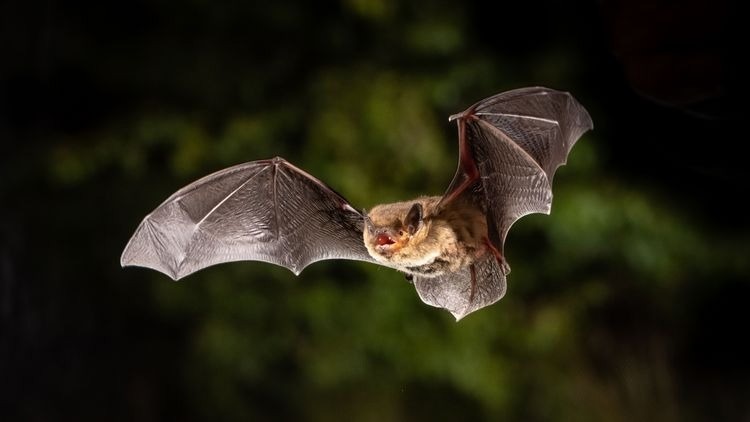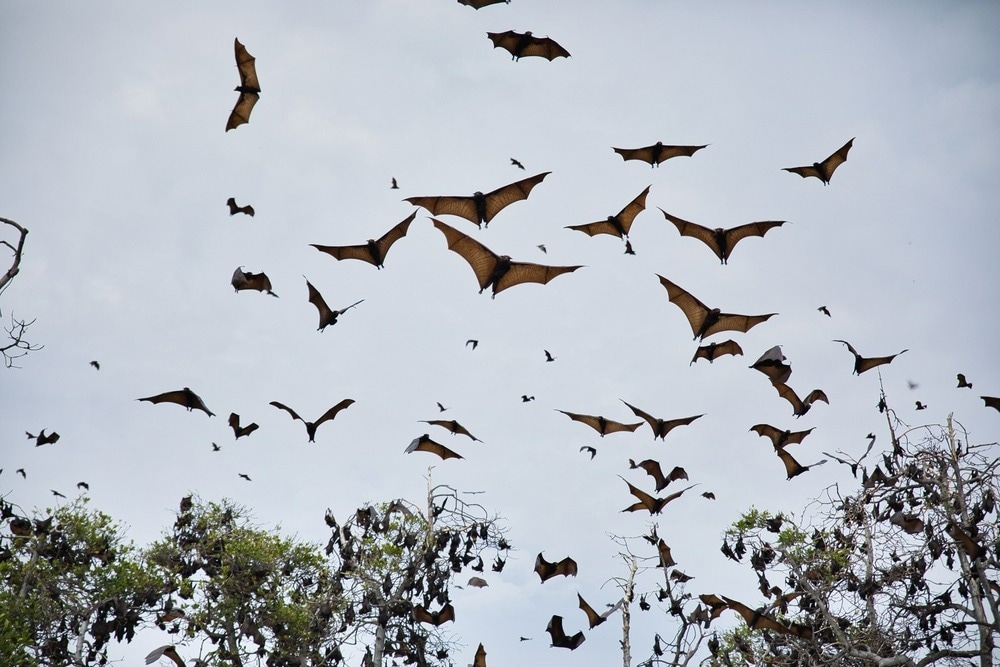Reviewed by Danielle Ellis, B.Sc.Dec 13 2023
According to a recent study published in the journal Biology Letters, mosquito bats possess a magnetic compass that they calibrate at sunset.
 The mosquito bat (Pipistrellus pygmaeus) only weighs as much as a 20-cent coin. Tens of thousands of individuals fly south along the Baltic Sea coast in Latvia in August and September. Image Credit: Christian Giese.
The mosquito bat (Pipistrellus pygmaeus) only weighs as much as a 20-cent coin. Tens of thousands of individuals fly south along the Baltic Sea coast in Latvia in August and September. Image Credit: Christian Giese.
Headed by the University of Oldenburg, an international research team conducted behavioral experiments to reveal that two distinct components of the Earth's magnetic field impact the orientation of these small animals.
Despite weighing only a few grams, mosquito bats embark on nightly migrations covering thousands of kilometers from northeast to southwest Europe. The method by which they navigate over such extensive distances in the dark remains unclear. Dr Oliver Lindecke, a biologist at the University of Oldenburg, has been leading an international team investigating this phenomenon.
The research team utilized behavioral experiments to demonstrate that two specific elements of the Earth's magnetic field influence the orientation of mosquito bats. This suggests a potential role for the magnetic sense in guiding their navigation.

Image Credit: mobrafotografie/Shutterstock.com
The findings of this study shed light on the intriguing migratory behavior of mosquito bats and were detailed in the journal Biology Letters.
Dr Oliver Lindecke has dedicated a decade to studying the migrations of small mammals.
Unlike birds, the magnetic sense of mammals that migrate over long distances has not yet been researched.”
Dr Oliver Lindecke, Biologist, University of Oldenburg
The findings from the latest research, in conjunction with previous results, now indicate that mosquito bats possess a magnetic compass and utilize it to calibrate at sunset.
Experiments on the Latvian Baltic Sea Coast
He and his fellow researchers carried out their experiments at the Ornithological Station of the University of Latvia in Pape, a village located in the far southwest of the country along the Baltic Sea.
In August and September, tens of thousands of bats migrate along the coast, especially towards Central Europe.”
Dr Oliver Lindecke, Biologist, University of Oldenburg
In a prior study, he had already observed that mosquito bats recalibrated their internal compass at sunset. They utilize the sun's setting position to determine their flight route later in the night.
To investigate whether these animals possess a magnetic sense for navigation, the researchers captured 65 mosquito bats. The following day, some of the bats were subjected to a manipulated magnetic field using a Helmholtz coil at sunset.
The horizontal direction of the magnetic field was rotated 120º clockwise relative to the Earth's magnetic field, causing a compass needle to point southeast instead of north.
In a second group, the researchers also reversed the inclination of the magnetic field, known as inclination, to mimic natural values measured in the southern hemisphere of the Earth. Another subset of bats served as a control group and experienced only the natural geomagnetic field in the dunes of Pape.
Different Reactions to Manipulated Fields
Several hours later, the researchers released the bats individually into a field laboratory during the night and assessed their departure directions. Previous studies have established that these animals maintain the chosen direction during their nocturnal flights.
The outcome revealed that approximately half of the animals in the control group flew south while the other half flew north. The two groups exposed to a manipulated magnetic field exhibited distinct behaviors: those with a rotated horizontal magnetic field predominantly oriented themselves to the northwest. However, in the group where the inclination was also reversed, no specific preferred departure direction could be identified.
The results show one thing above all.
The bats are sensitive to both the horizontal direction and the inclination of the magnetic field at sunset - and this influences their departure even hours later.”
Dr Oliver Lindecke, Biologist, University of Oldenburg
The mechanism underlying bats’ magnetic sense remains unclear, but the study suggests that similar to birds, they can utilize the inclination of the Earth’s magnetic field for navigation, according to Lindecke.
The specific connections are currently under investigation in the Collaborative Research Center (SFB) “Magnetic Reception and Navigation in Vertebrates” at the University of Oldenburg, a project funded by the German Research Foundation since 2018. Lindecke has been associated with the SFB as a fellow since 2021 and will lead a sub-project in 2023 focusing on migratory bats.